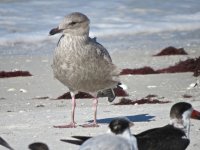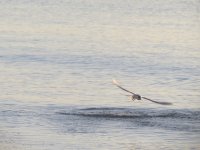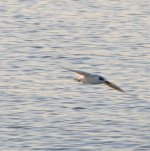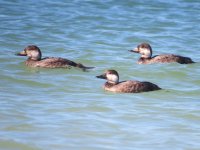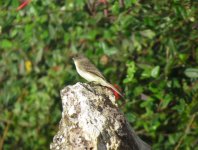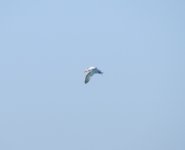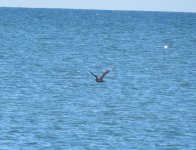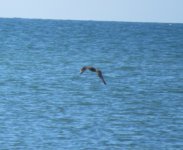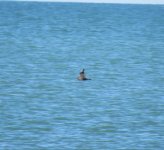jocateme
Well-known member
Hi there,
I'm back from a trip to Florida (and some other states in US) and would appreciate some help with these IDs.
1 - Naples, FL. It's a big gull, much taller than Ring-billed and Laughing, the only other gulls present in this flock (+Skimmers, Sanderlings and Terns). My best guess would be juv. Herring.
2/3 - Fort de Soto Park, near St. Petersburg, FL. I'm having a hard time telling if this is a Sandwich or a Common Tern. Is it possible to ID it from these angles?
4 - Off the coast of Clearwater, FL. These are almost certainly Black Scoters, but one factor is keeping me a bit skeptical. None of the birds of all three flocks I've seen (one of which composed by 22 individuals) were entirely black, as I'd expect a male to be; were they all females and immatures?
5 - Gainesville, FL. My best guess (wild, wild shot) for this flycatcher would be Least. Is it even IDable? No voice heard, unfortunately.
Thanks a lot!
I'm back from a trip to Florida (and some other states in US) and would appreciate some help with these IDs.
1 - Naples, FL. It's a big gull, much taller than Ring-billed and Laughing, the only other gulls present in this flock (+Skimmers, Sanderlings and Terns). My best guess would be juv. Herring.
2/3 - Fort de Soto Park, near St. Petersburg, FL. I'm having a hard time telling if this is a Sandwich or a Common Tern. Is it possible to ID it from these angles?
4 - Off the coast of Clearwater, FL. These are almost certainly Black Scoters, but one factor is keeping me a bit skeptical. None of the birds of all three flocks I've seen (one of which composed by 22 individuals) were entirely black, as I'd expect a male to be; were they all females and immatures?
5 - Gainesville, FL. My best guess (wild, wild shot) for this flycatcher would be Least. Is it even IDable? No voice heard, unfortunately.
Thanks a lot!




